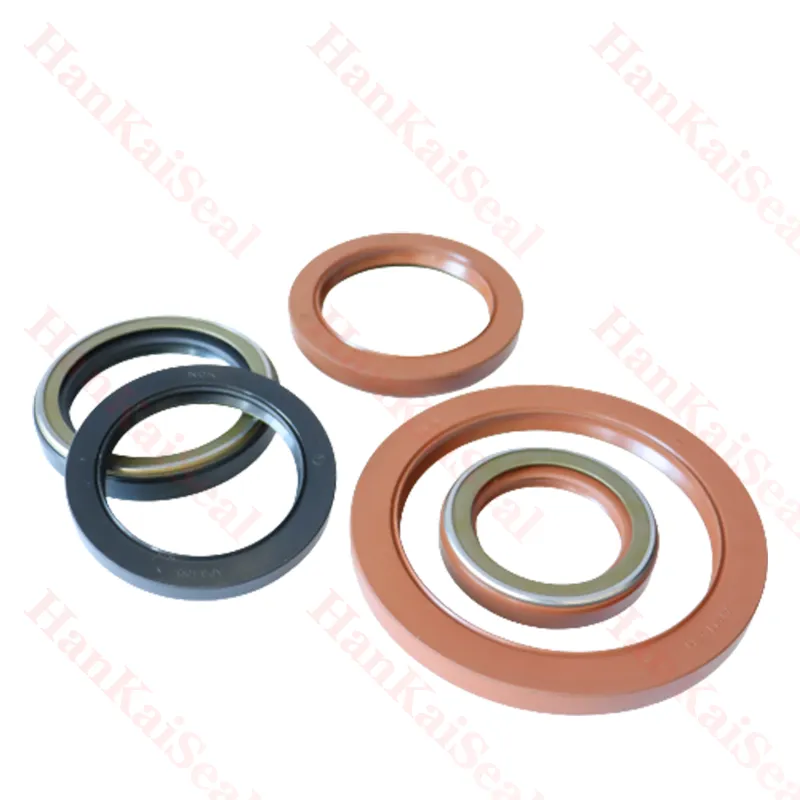Nov . 26, 2024 13:08 Back to list
Hydraulic Seal Repair Kit for Efficient Hydraulic System Maintenance and Restoration
Understanding Hydraulic Seal Repair Kits A Comprehensive Guide
Hydraulic systems play a crucial role in various industries, from manufacturing to construction and automotive maintenance. These systems rely on hydraulic seals to ensure that fluids are contained within the system, maintaining pressure and preventing leaks. Over time, seals can wear out due to various factors such as temperature fluctuations, chemical exposure, and mechanical wear. When this happens, a hydraulic seal repair kit becomes invaluable. In this article, we will explore the components of a hydraulic seal repair kit, the common problems they address, and some tips on selecting and using these kits effectively.
What is a Hydraulic Seal Repair Kit?
A hydraulic seal repair kit is a collection of various components designed to repair leaking or damaged hydraulic seals. These kits typically include O-rings, seals, backup rings, and other necessary hardware. The goal of the kit is to provide everything needed to restore a hydraulic system’s integrity without the need for complete system replacement.
Components of a Hydraulic Seal Repair Kit
1. O-Rings These are circular seals that fit into groove-shaped fittings. They are one of the most common types of hydraulic seals and can be made from various materials, including rubber, polyurethane, and silicone. Different materials are used depending on the operating conditions, including pressure and temperature.
2. Seals In addition to O-rings, a repair kit may contain other types of seals, such as lip seals and piston seals. These seals are crucial for preventing fluid leakage between components and are used in applications involving high-pressure systems.
3. Backup Rings Sometimes used in conjunction with O-rings, backup rings prevent O-ring extrusion under high-pressure conditions, enhancing the seal's longevity and reliability.
4. Gaskets and Washers These components assist in sealing irregular surfaces and provide an additional layer of protection against leaks.
5. Lubricants Many kits may also include lubricants that are essential for applying around seals and O-rings to ensure a better fit and reduce wear.
6. Tools Some kits come with basic tools, such as picks and installation tools, to help with the installation or removal of seals without causing damage.
Common Problems Addressed
Hydraulic seal repair kits are typically used to address issues such as
hydraulic seal repair kit

- Leakage The most common problem in hydraulic systems, often caused by wear and tear on seals. - Pressure Loss Inefficient seals can lead to reduced pressure in the hydraulic system, impacting its overall performance. - Contamination Gaps due to worn seals can allow dirt and moisture to enter the system, leading to further damage. By using a hydraulic seal repair kit, you can effectively tackle these problems and extend the life of your equipment.
Selecting the Right Repair Kit
When choosing a hydraulic seal repair kit, consider the following factors
1. Compatibility Ensure that the kit components are compatible with the specific hydraulic system you are working on. This includes checking the sizes and materials to match the existing seals.
2. Material Choose kits with seals made from materials suited for your application environment, especially considering factors like temperature, pressure, and exposure to chemicals.
3. Quality High-quality kits may have a slightly higher upfront cost but will save money in the long run by reducing the frequency of repairs.
4. Service Manual Refer to the machine's service manual for specifications on the seals and potential recommended kits.
Installation Tips
- Clean the Area Before starting the installation, clean the surfaces thoroughly to remove old sealant and debris. - Use Proper Tools Use the appropriate tools to avoid damaging the components during installation.
- Lubricate before Placing Always apply a suitable lubricant to seals and O-rings to ease installation and increase longevity.
- Follow Instructions If the kit includes installation instructions, follow them carefully to ensure proper application.
Conclusion
Hydraulic seal repair kits provide an effective solution to common seal-related issues in hydraulic systems. By understanding the components, selecting the right kit, and following proper installation procedures, you can restore hydraulic systems to optimal performance, minimize downtime, and save costs associated with complete replacements. Whether you are a seasoned professional or a DIY enthusiast, keeping a hydraulic seal repair kit on hand is a wise investment for maintaining the efficiency and longevity of hydraulic equipment.
-
TCN Oil Seal Metal Ring Reinforcement for Heavy Machinery
NewsJul.25,2025
-
Rotary Lip Seal Spring-Loaded Design for High-Speed Applications
NewsJul.25,2025
-
Hydraulic Cylinder Seals Polyurethane Material for High-Impact Jobs
NewsJul.25,2025
-
High Pressure Oil Seal Polyurethane Coating Wear Resistance
NewsJul.25,2025
-
Dust Proof Seal Double Lip Design for Construction Equipment
NewsJul.25,2025
-
Hub Seal Polyurethane Wear Resistance in Agricultural Vehicles
NewsJul.25,2025
-
The Trans-formative Journey of Wheel Hub Oil Seals
NewsJun.06,2025
Products categories
















